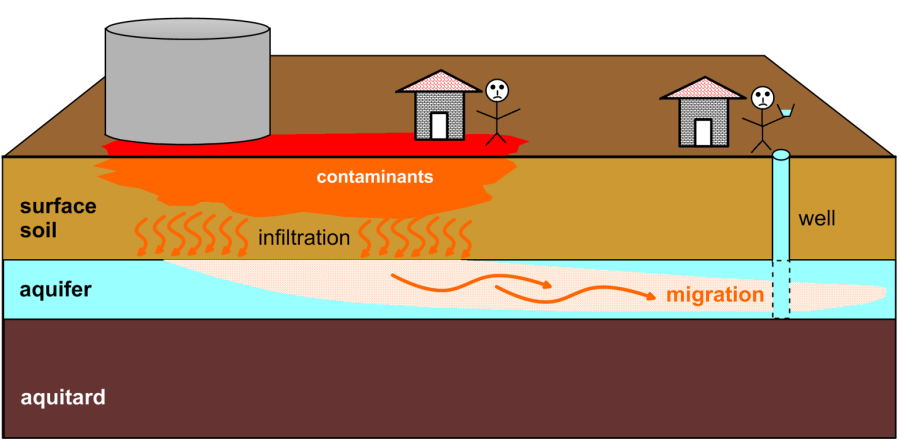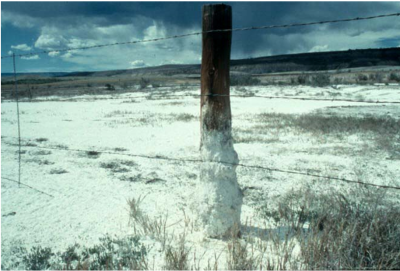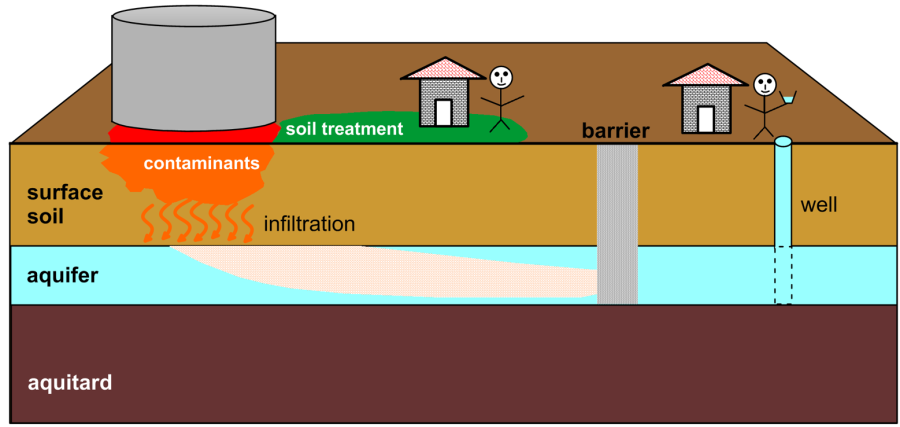2.1 Introduction to Part 2
Geoenvironmental Engineering refers to the application of geotechnical engineering technologies for protecting the geoenvironment from contamination due to human activities or natural processes (Figure 2.1). The term geoenvironment includes the topsoil, subsoil and groundwater. Air and surface water pollution is a subject of other environmental sciences.

Geoenvironmental Engineering deals not only with the protection of the geoenvironment from pollution, but also with the preservation of its quality e.g., protection of groundwater from overexploitation and salination (Figure 2.2).
Geoenvironmental Engineering is about offering solutions to complex problems encountered by the waste management and environment restoration industry, and involves experts spanning multiple disciplines such as Geotechnical Engineers, Environmental Engineers, Chemical Engineers, Geologists, Chemists, Microbiologists, Soil scientists etc.


Some of the specific tasks that fall under the scope of Geoenvironmental Engineering include:
- Measuring of contaminant concentration in soil.
- Implementing measures to constrain contaminant diffusion (see Figure 2.3).
- Techniques for extraction of polluting agents.
- Measuring quality deterioration in groundwater and implementation of mitigation measures.
- Minimising environmental impact of large engineering projects.
The above tasks are formulated as a geoenvironmental study, which consists of the following parts:
- Identification of human activities or natural processes that may result in geoenvironment contamination. May refer to planned or existing engineering projects.
- In situ and laboratory testing and interpretation of results, for determining the extent of contamination, and its evolution with time.
- Design and construction of engineering solutions to mitigate contamination effects, which may include:
-
- Design of hazardous waste repositories.
- Implementation of monitoring systems to measure pollutant concentrations.
- Extraction of pollutants from the subsoil or groundwater.
- Design of containment measures e.g., slurry walls, grouting, sheet piling, electrokinetic barriers, ground freezing (Figure 2.3).
- Risk assessment and risk management.
In this Part, emphasis is put on providing a brief overview of geotechnical aspects of geoenvironmental engineering, and more specifically on the use of geotechnical methods for containment of pollution, and extraction of polluting agents to mitigate contamination effects. Part 2 concludes with a demonstration of the use of simple numerical methods to support the design of containment facilities.

